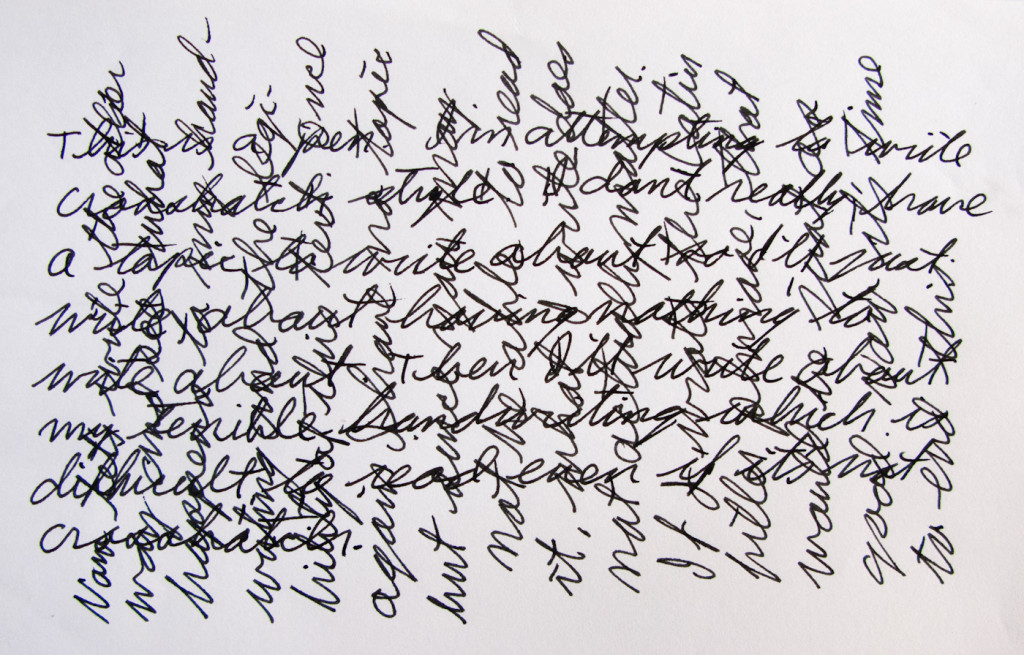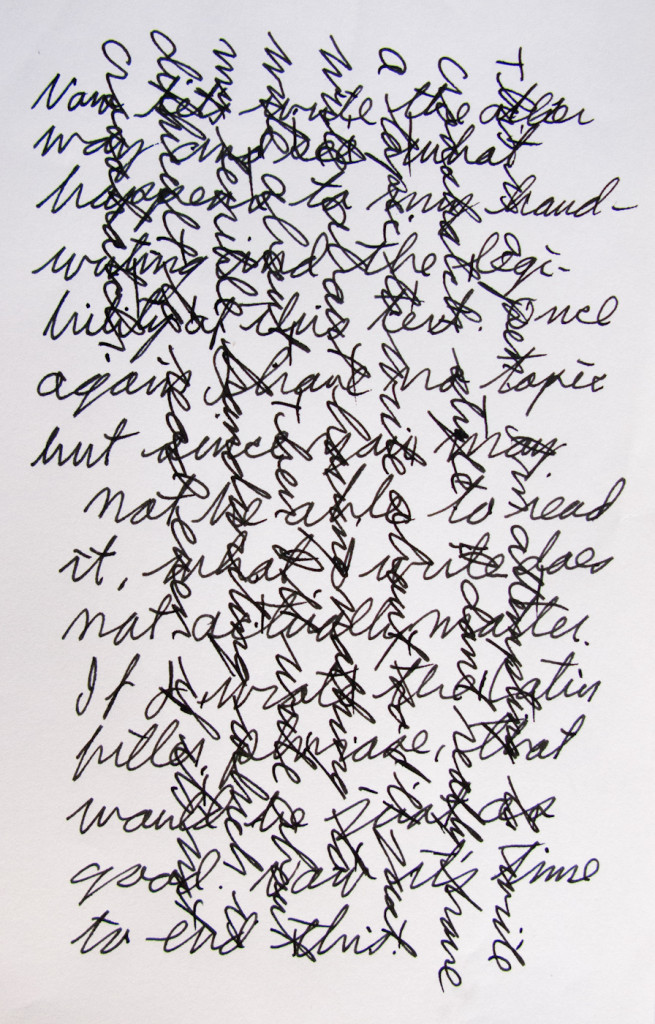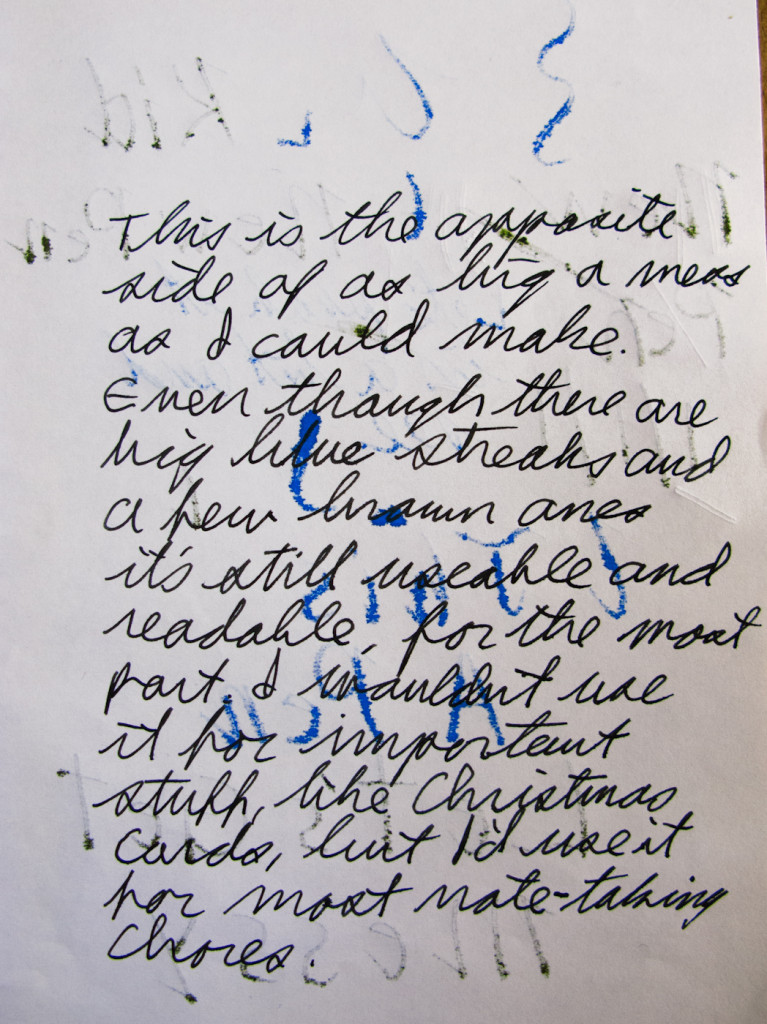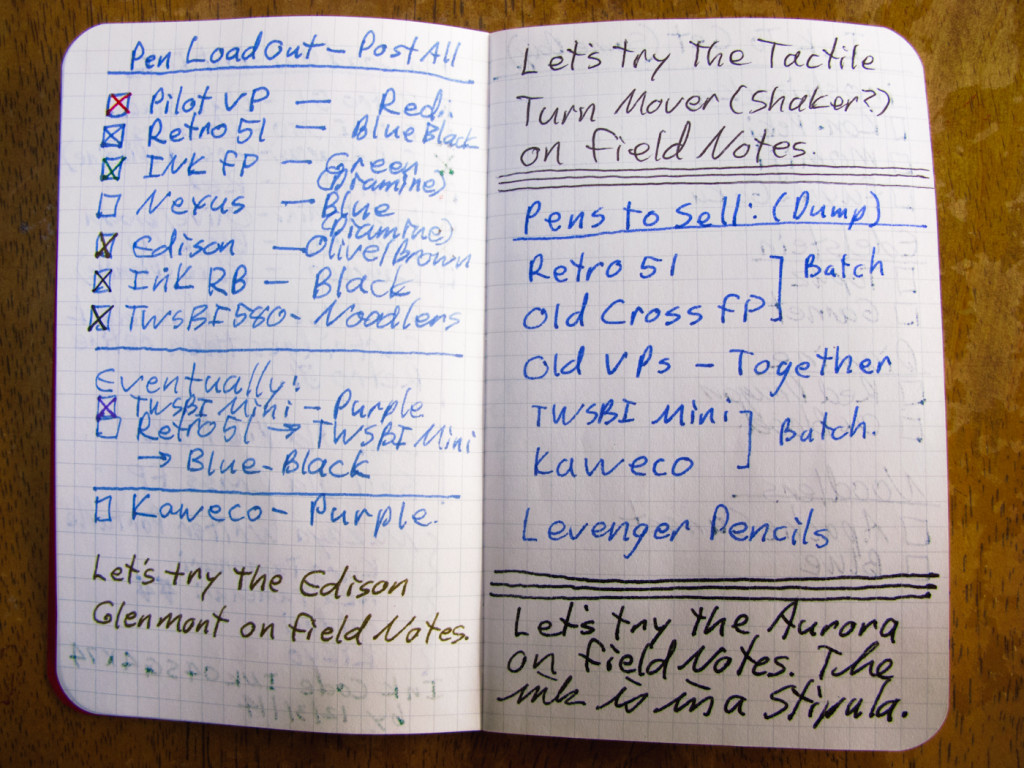5by5 | Home Work #145: The One About Notebooks
Dave and Aaron discuss their personal systems for note-taking, their preferred daily-carry setup, and other resources for using notebooks and pens.
Some podcast listening for your weekend.
5by5 | Home Work #145: The One About Notebooks
Dave and Aaron discuss their personal systems for note-taking, their preferred daily-carry setup, and other resources for using notebooks and pens.
Some podcast listening for your weekend.
A Story Of Office Subterfuge — The Pen Addict
I decided to make a contribution to the supply cabinet. I knew the Pilot Varsity was a great entry-level fountain pen, and they’re inexpensive. I bought about two dozen in blue and black from JetPens, and snuck into the supply cabinet with them on a Tuesday afternoon. I carefully reshuffled the Bics and the Flairs to make a space. Luckily, JetPens had included a Varsity box, so once I was done it looked as if the interloping pens belonged there… Two weeks later, they were gone.
Such a fantastic and inspiring story. Seriously, go read the whole thing.
“I won’t say it’s a church. I won’t say it’s a sacred place. But it certainly is special.”
Portrait of a Letterpress Printer from • of two lands • on Vimeo.
via Coudal.
by Dwayne Lively
A lot of fountain pen users lament that many notebooks, even some expensive ones, allow enough bleedthrough and ghosting to render the backside of a page unusable. To them, an ordinary 48 page Field Notes notebook is actually a 24 page notebook.
I’ve personally embraced bleedthrough. Dozens of years ago I toured Charles Dickens house in London and one of the displays featured a letter written in crosshatch. This was a way to save paper by writing in one direction on the page, then turning the page and writing across what you’d just written.
I was fascinated enough by this way of writing that I experimented with it by writing in my journal in crosshatch. At first it was strange, but I soon learned to read it.
Reading crosshatch is interesting. After a few moments, the vertical lines fade into gray and you find yourself focusing on the horizontal lines. After you turn the page, there’s a moment of adjustment, but then you are able to see the new lines and keep reading.

A modern example of cross hatch written quickly on copy paper.

The same example turned sideways.
Embracing bleedthrough and ghosting is like that. The spots become background to the writing. They are a different color, or at least a lighter one, even if you haven’t changed inks.
Granted, too much bleedthrough is bad, but most of the time it’s not worth wasting an entire page.

Handwriting on the back of particularly bad bleedthrough and ghosting.
I don’t write crosshatch anymore. My handwriting is bad enough that I often have trouble reading it myself and don’t need to add extra complications. I don’t need to try to turn a 48 page notebook into a semi-legible 96 page notebook.
However, other than that, I’ve fully embraced the bleedthrough and the ghosting. It adds character to a notebook and it means a 48 page notebook is always 48 pages.

Fountain pen bleedthrough and ghosting on a Field Notes notebook.
Dwayne Lively is a writer and English teacher living in Japan. At his blog Mere Blather he writes about life, Japan, Albania and pens and paper. You can follow him @DwayneLively on Twitter and @blatherama on Instagram
Noteworthy Authors Writing Longhand :: Rhodia Drive
Just a couple, and the post is mostly pull quotes, but of interest all the same. I won’t spoil it by telling you which two.
How And Why To Keep A “Commonplace Book” | Thought Catalog
A commonplace book is a central resource or depository for ideas, quotes, anecdotes, observations and information you come across during your life and didactic pursuits. The purpose of the book is to record and organize these gems for later use in your life, in your business, in your writing, speaking or whatever it is that you do.
Some good history, tips, and ideas here.
Learning Cursive Handwriting All Over Again | Write Analog
I had no idea of the “rabbit hole” I would enter when I decided to research learning cursive handwriting. For something that many people think is “dying” or “non-essential”, there are a bunch of resources out there for someone interested in learning cursive and/or improving their handwriting. I had no idea what I was getting into, but it’s been a rewarding education.
Chock full of history and resources, this post is a great place to start for anyone interested in (re)developing the practice of cursive writing.
I’ve always been a handwriter, and one of the great joys and embarrassments is that it links you to the you of the past. Flipping through old notebooks, I can go back more than ten years and instantly be connected to the terrible and embarrassing moody poetry of my high school days– dark and cheesy like my soul –or the chirpy Lion King diary with the little golden lock where I talk about playing games with my brother at the cottage. I remember where and why I wrote most of these things, unlike when I WayBack machine my old blogs which usually feel like they were written by a foreign entity. No plausible deniability when your handwriting hasn’t changed much in 10 years.
The whole thing is wonderful. Go read it.
The Five Minute Journal — Tools and Toys
The Five Minute Journal bills itself as “a journal for people who don’t write journals.” Its aim is to help you cultivate a daily journaling habit — a topic I am very interested in — by making the process as easy and painless as possible.
I had not heard of this journal before. Looks like a great way to start.